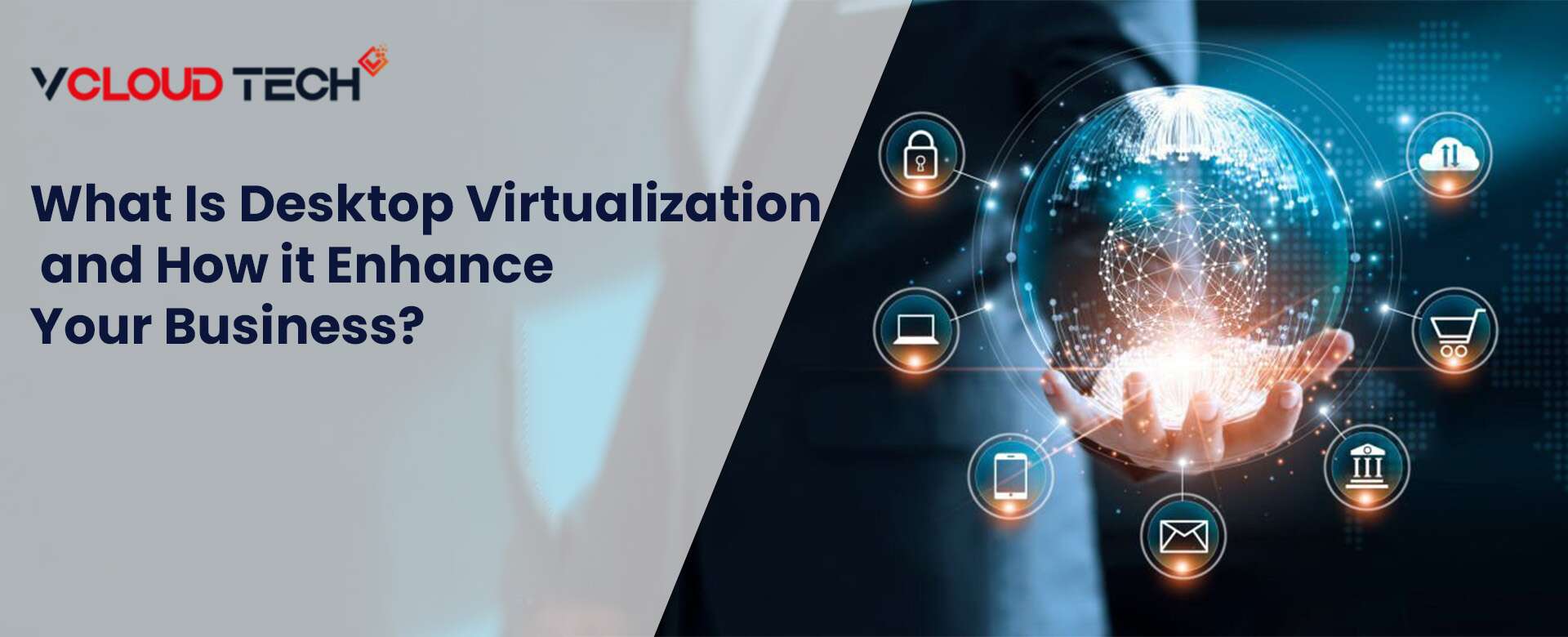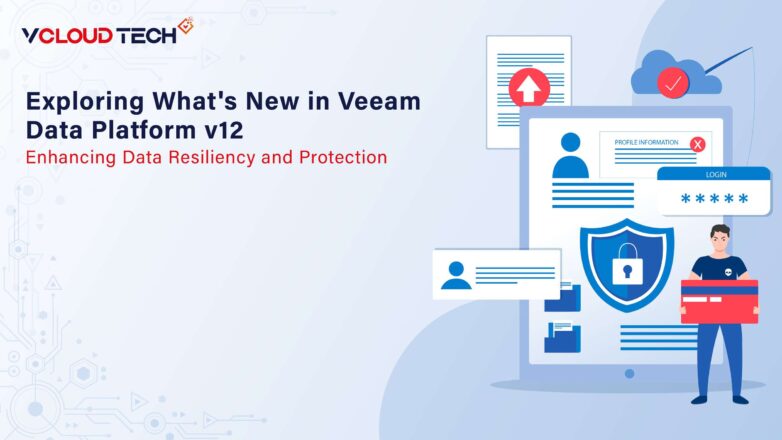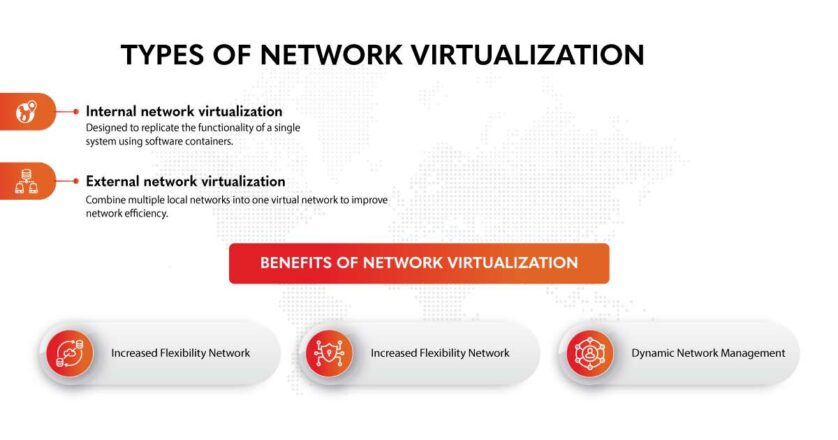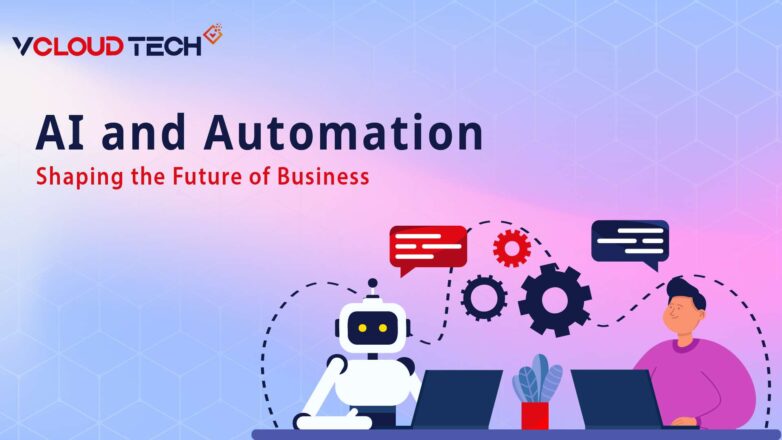What Is Desktop Virtualization and How Does it Enhance Your Business?
Desktop virtualization is a technique that permits the creation and storage of several desktops for users on one host. Which is the house in the data center or the cloud. These accomplish through a hypervisor that sits over the host server hardware, allowing virtual desktops to benefit from the computing power of the hardware of the server that runs them. The hypervisor makes VMs that emulate the desktop environments of the user. These can contain different operating platforms, applications, customized settings, and user data. Users can remotely access and manage desktops from any device. Desktop Virtualization allows users to manage their desktops individually in a single central server. Users may connect to the main server via either a LAN or WAN connection or via the Internet.
Types of Desktop Virtualization?
The three most popular types, or say, the deployment methods for desktop virtualization are:
- Virtual Desktop Infrastructure (VDI)
- Remote Desktop Services (RDS)
- Desktop-as-a-Service (DaaS)

Virtual Desktop Infrastructure (VDI)
In the Virtual Desktop infrastructure. The operating system runs on a virtual computer (VM) located on a server within the data center. The desktop image moves across networks to reach the user’s device. The user can communicate with their desktop (applications that run it along with the OS) as if it were local. VDI provides each user their VM with an operating system unique to each.
The operating system’s resources, such as drivers, memory, CPUs, etc. operate through a software layer called a Hypervisor. It emulates their output, handles the allocation of resources across multiple VMs, and permits them to run in tandem with the same host. One of the significant benefits of VDI is that it can provide end-users with Windows desktops and operating systems.
Remote Desktop Services (RDS)
Remote desktop services are also called Remote Desktop Session Host (RD Session Host). Users can remotely connect to desktops and Windows applications via Microsoft Windows Server. Microsoft Windows Server operating system. Desktop images and applications are accessible through Microsoft Remote Desktop Protocol (RDP). From the point of view of the user, RDS and VDI are the same. However, the one version that runs Windows Server can support as many simultaneous users as the server’s hardware can handle. RDS can be a more affordable desktop virtualization choice.
Desktop-as-a-Service (DaaS)
With Desktop-as-a-Service, VMs host in a cloud-based backend provided by a third-party vendor. DaaS can be easily scaled and is more flexible than traditional on-premise solutions. Typically deploys quicker than other options for Desktop Virtualization. Like other cloud desktop virtualization, DaaS shares many benefits of cloud computing.
- The Ability to handle Fluctuating Workloads
- Shifting Storage Requirements
- Usage-based Pricing
- The Capability of making Applications
- Data Accessible from almost any internet-connected device
The main drawback of DaaS is that the features and configurations aren’t always as customizable as required.
How Desktop Virtualization Work?
Most desktop virtualization software solutions provide one interface for administrators to control and customize desktops. Citrix DaaS (formerly Citrix Virtual Apps and Desktops service). Offers virtualization solutions that allow IT to manage virtual machines, apps, and security while providing access to any device. As a result, end users can use desktops & applications without regard to the operating system on the device and interface. Citrix DaaS is the most efficient solution to keep your tasks & make it easier to manage VDI for your corporate.
Citrix Desktop Virtualization is a simple-to-manage service that lets companies safely offer DaaS and VDI desktops and apps to any device and over any network. It is deployed from the cloud to provide incredible flexibility and versatility. It can use in Hybrid Environments that combine a mix of private clouds, public cloud services, and on-premise data centers. This solution is a perfect fit for highly-regulated industries such as government, healthcare, and finance. For businesses requiring the least involvement and a simple experience, DaaS solutions allow you to offload infrastructure management and administration completely. It all adds to increased agility for IT and an improved user experience for your customers.
Benefits of Desktop Virtualization
- Flexibility: As long as he has internet access, a user can access applications or data on any Computing device. So, there’s no need to chain to workstations or rely on flash drives or Email threads to transfer data from one place to another.
- Cost Efficiency: Desktop virtualization offers organizations significant cost savings by eliminating upfront investments in equipment, additional staff, hardware, storage, and maintenance.
- Enhanced Security: Human error, not cloud infrastructure, is the primary reason behind most security issues. A trusted desktop Virtualization vendor protects your data with layers of cloud protection to eliminate threats. The highest quality encryption, routers, switches, and continuous monitoring ensure Cloud Security
- Eco-Friendly: Desktop virtualization generally improves an organization’s ability to go green by eliminating the need to purchase hardware. It significantly reduces internal energy consumption and costs.
- Centralized Management: Desktop virtualization benefits businesses by centralizing and simplifying the Management of computing resources, including desktop control, data security, data control, backup, and disaster recovery
- Disaster Recovery: Full redundancy provided by Desktop Virtualization solutions facilitates data recovery during a disaster. In fact, in the event of a system failure or catastrophic physical event, data centers can pick up where they left off and continue normal operations, minimizing downtime.
- Improve Employee Productivity and Onboarding: Dismissing employees from a central workspace does not mean compromising control functions such as oversight and accountability. Using a DaaS provider eliminates the need to inspect networks and devices to control access to data and applications. The tasks are allowed to be performed remotely.
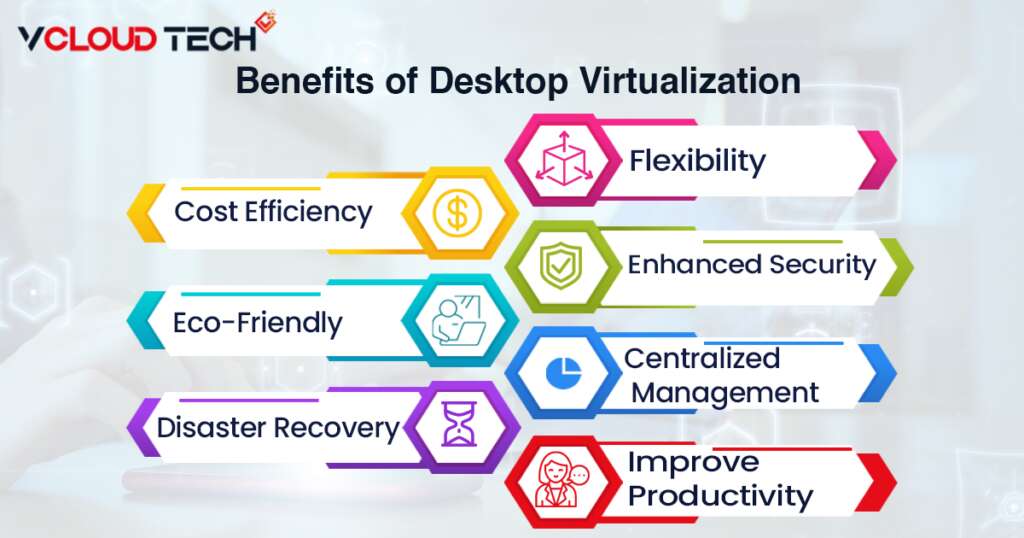
How Virtual Desktops Can Enhance Your Business?
Desktop computers are a challenging undertaking in the modern world. Keeping your software updated with operating system updates weekly to support systems is a challenge. When new employees come aboard, the company needs to have a machine ready, which could take hours to set up using the standard method of Installing software, patching it, and ensuring that the computer has the proper network credentials. Desktop virtualization provides many benefits, not the least of which is reducing maintenance costs. Cloud computing has allowed businesses to abandon the traditional model of IT based on machines and develop Virtual Desktops that do not require personal maintenance.



